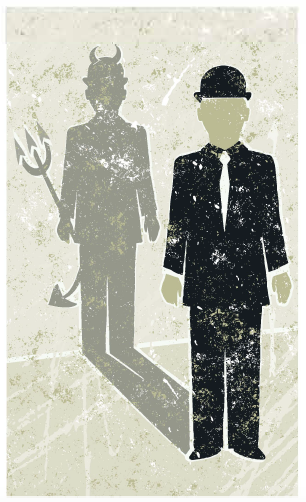THE ACTUARIAL STANDARDS BOARD in the past few years has revised six Actuarial Standards of Practice (ASOPs), and five more are pending revisions. The Academy’s Committee on Qualifications has expanded the scope of the Qualification Standards and increased the continuing education requirements for actuaries issuing statements of actuarial opinion. The Society of Actuaries, the Casualty Actuarial Society, the Conference of Consulting Actuaries, and the American Society of Pension Professionals and Actuaries all have added continuing education requirements as a requirement for membership.
Staying current with professional requirements is a job of its own. But we also are faced with a steady stream of new or revised government regulations and changing accounting standards. Add to these challenges the pressures in today’s economy to be efficient and profitable.
It is not difficult to imagine a situation in which mistakes are made or poor judgment is exercised. The most common alleged violations of the Code of Professional Conduct that are reported to the Actuarial Board for Counseling and Discipline (ABCD) involve Precept 1, the requirement to act honestly, with integrity and competence; Precept 2, the requirement to be qualified to perform actuarial services and have satisfied the Qualification Standards; or Precept 3, the requirement to satisfy applicable ASOPs.

When we encounter these situations, we need to keep in mind Precept 13 of the Code of Professional Conduct:
An Actuary with knowledge of an apparent, unresolved, material violation of the Code by another Actuary should consider discussing the situation with the other Actuary and attempt to resolve the apparent violation. If such discussion is not attempted or is not successful, the Actuary shall disclose such violation to the appropriate counseling and discipline body of the profession, except where the disclosure would be contrary to Law or divulge Confidential Information.
The establishment of a code of conduct, standards of practice, qualification standards, and disciplinary procedures is common practice for a self-regulating profession such as the actuarial profession. High standards maintain the integrity and reputation of the profession and, as noted in the Code of Professional Conduct, support “the actuarial profession in fulfilling its responsibility to the public!’ A requirement to report apparent violations of a profession’s code to the appropriate disciplinary body is less common but not unreasonable for a self-regulating profession. The Canadian Institute of Actuaries and the American Bar Association’s Model Rules of Professional Conduct have similar requirements.
Assessing a Potential Violation
 An actuary must exercise professional judgment in determining whether or not a violation of the Code of Professional Conduct has occurred. That requires a thorough understanding of both the code and the standards. Discussion papers on professionalism topics that are available on the Academy’s website may provide a framework for evaluating a possible violation of the Code of Professional Conduct. An additional resource for actuaries is the ABCD’s process for requesting guidance. Informal guidance can be requested by calling or emailing the ABCD office or an individual member of the ABCD. The opportunity to discuss a particular situation with a member of the ABCD may be helpful in determining if a violation of the Code of Professional Conduct has occurred, if the violation is material, and if the matter is still unresolved.
An actuary must exercise professional judgment in determining whether or not a violation of the Code of Professional Conduct has occurred. That requires a thorough understanding of both the code and the standards. Discussion papers on professionalism topics that are available on the Academy’s website may provide a framework for evaluating a possible violation of the Code of Professional Conduct. An additional resource for actuaries is the ABCD’s process for requesting guidance. Informal guidance can be requested by calling or emailing the ABCD office or an individual member of the ABCD. The opportunity to discuss a particular situation with a member of the ABCD may be helpful in determining if a violation of the Code of Professional Conduct has occurred, if the violation is material, and if the matter is still unresolved.
The Code of Professional Conduct doesn’t require that an actuary confer with another actuary about a potential violation. But initiating such a discussion has many advantages. First, speaking with another actuary might provide a better understanding of the facts and circumstances of a particular situation. This could enable the actuary to properly evaluate any potential violation-and possibly eliminate his or her concerns. Second, through conversation, the actuary may learn that a change already has occurred and that the matter has been resolved. Or, a constructive dialogue with the other actuary could lead to an action plan to resolve the matter in a satisfactory manner. A word of caution: The actuary shouldn’t attempt to discuss a potential violation if either actuary is prohibited by law from doing so and probably will be unable to discuss a potential violation if acting in an adversarial environment involving the other actuary.
The opportunity to discuss a particular situation with a member of the ABCD may be helpful in determining if a violation of the Code of Professional Conduct has occurred, if the violation is material, and if the matter is still unresolved.
Annotation 13-1 of the Code of Professional Conduct provides guidance on materiality by describing a violation that is material if it is “important or affects the outcome of a situation, as opposed to a violation that is trivial, does not affect an outcome, or is one merely of form.” The Academy’s materiality discussion paper (www.actuary.org/pdf/prof/ materiality_06.pdf) offers additional guidance in explaining that an omission, understatement, or overstatement in a work product is material if it is likely to affect either the intended principal user’s decision making or the intended principal user’s reasonable expectations.
Complaints about possible violations of the Code of Professional Conduct should be submitted in writing to the ABCD. The ABCD keeps the facts and circumstances of all matters submitted for counseling or discipline confidential (see the Rules of Procedure for the ABCD, Sections VIII.B.4 and X). The ABCD requests, but does not require, that complaining actuaries and subject actuaries also maintain confidentiality. The complaining actuary is identified to the subject actuary unless anonymity is requested. But if the complaining actuary requests anonymity, the ABCD will consider the complaint only if the information comes from a known source such as a signed document or a published journal.
An anonymous complaint satisfies an actuary’s obligation under Precept 13. But if anonymity is sought, the complaining actuary will not be notified of decisions made by ABCD’s chairperson, vice chairpersons, or the full board regarding the complaint. Further information about the complaint process can be found on the ABCD’s website, www. abcdboard.org.
KATHY RILEY is a senior vice president of the Segal Co. in Boston. She is a fellow of the Society of Actuaries, a fellow of the Casualty Actuarial Society, a member of the Academy, an enrolled actuary, and a member of the ABCD.

